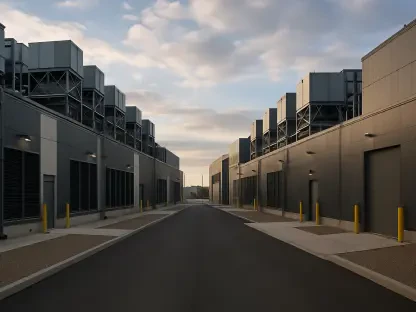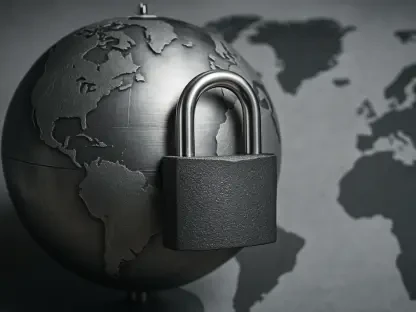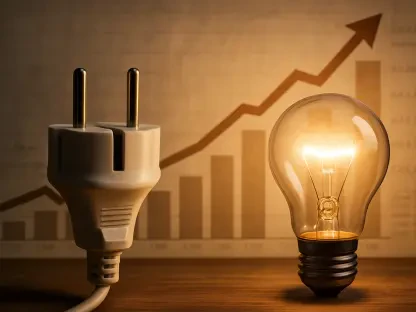In a solar market characterized by unexpected downturns and economic uncertainties, the success of a particular pilot program in Montgomery County, Maryland, symbolizes innovation in renewable energy financing. Launched with foresight and collaboration, this initiative stands out amid national declines, capturing attention for its resilience and strategic execution. The program’s inception in November and rapid progress have positioned it as a beacon in challenging times, starkly contrasting with the contractions experienced nationally since 2024. It embodies the potential for local ingenuity and targeted financial structures to overcome broader industry difficulties, thereby fostering optimism for future solar ventures. This success is not merely an anecdote in the regional context but serves as a case study in leveraging local partnerships and creativity in policymaking to bolster sustainable energy adoption.
Innovative Financing Fuels Program Success
The collaboration among fintech platform OneEthos, Montgomery County Green Bank (MCGB), and Climate First Bank has emerged as a pivotal force behind the program’s unexpected triumph. By securing over $3 million in loans within a year of its launch, the initiative underscores the importance of innovative financial models in encouraging solar adoption, even amidst widespread market contractions. Notably, the program’s ability to secure 40 loans by March and expand to 83 loans by May, reaching a total of $3,062,224, reveals its robust groundwork in a climate of uncertainty. A key aspect of its appeal lies in offering 30-year loans devoid of dealer fees, a unique feature in an industry where financing typically spans 15 to 25 years with significant added costs. This structure not only makes solar installations more financially viable for consumers but also enhances long-term sustainability.
The strategic elements contributing to the program’s success include targeted interest rate subsidies offered by MCGB, despite the organization’s primary focus on commercial ventures. MCGB has played a crucial role in enabling loans by working with partners to subsidize a 4.99% interest rate for the first decade, specifically for qualifying low-income households, which then adjusts to a still-competitive 7.99%. By removing barriers to entry for economically vulnerable groups, the program effectively broadens access to solar energy. This initiative, amidst other positive impacts, illustrates how creative financial solutions could surmount industry challenges already heightened by the possible retraction of federal incentives like the Inflation Reduction Act’s residential solar tax credit.
Drivers and Challenges in the Solar Market
Amid national solar industry fluctuations, this program’s success starkly contrasts with prevalent market trends that have, since 2024, led to a historic decline in residential installations. A major contributing factor to the broader sector’s struggles includes the financial instability of solar companies, highlighted by Sunsova’s recent bankruptcy. Furthermore, political uncertainties, particularly those surrounding federal incentives, have compounded these challenges. The House’s May budget proposal, which suggests the early cessation of beneficial tax credits unless projects commence by year-end, has added another layer of complexity for potential stakeholders.
However, Marcio deOliveira, CEO of OneEthos, posits that while political uncertainties have not been the primary catalyst for consumer decisions within the program, they provide a backdrop that could influence future growth. As several potential solar adopters face the reality of diminishing federal incentives, the significance of local financial interventions like those provided by Green Bank becomes increasingly apparent. The scenario in Montgomery not only exemplifies the impact of state-level solutions but also highlights the potential for such models to mitigate the influence of political headwinds and economic slowdowns while preserving growth momentum.
Enhancing Energy Efficiency and Broader Implications
In addition to its direct impact on solar adoption, the program highlights another critical dimension of energy sustainability: efficiency improvements. Observations by industry experts, such as Beresniovas, have drawn attention to the need for comprehensive enhancements in household energy efficiency as part of any solar deployment strategy. Many homes remain energy deficient due to outdated HVAC systems, poor insulation, and obsolete windows, making comprehensive upgrades imperative. Recognizing this, the program plans to diversify its offerings by incorporating energy efficiency solutions alongside solar solutions in the coming months to deliver more holistic energy conservation strategies to consumers.
By advancing both solar adoption and energy efficiency, the pilot program addresses dual aspects of sustainability, offering a template for similar initiatives nationwide. The foresight shown by including energy efficiency not only maximizes the benefits of solar installations but also enhances overall energy conservation goals. This strategic focus promises to create a ripple effect, encouraging others to explore similar comprehensive models, thereby embracing sustainable energy solutions beyond singular installations. These efforts, positioned against the backdrop of Montgomery County’s successful pilot initiative, suggest a future where local programs drive broader change.
A Blueprint for Sustainable Energy Progress
The partnership between fintech platform OneEthos, Montgomery County Green Bank (MCGB), and Climate First Bank has become a key player in the program’s surprising success. Garnering over $3 million in loans within a year highlights the significance of innovative financial frameworks in promoting solar energy adoption, despite general market slowdowns. The program’s achievements, such as growing from 40 loans in March to 83 by May, totaling $3,062,224, underscore strong fundamentals amid uncertain conditions. Its attractiveness is partly due to offering 30-year loans without dealer fees, a unique perk in an industry typically marred by shorter terms and hefty fees. This makes solar installations economically viable and boosts sustainability. MCGB, although focused on commercial projects, has been instrumental by providing interest rate subsidies, offering 4.99% for the first decade and 7.99% later for qualifying low-income groups. Such incentives are significant, especially as federal support like the Inflation Reduction Act’s solar tax credit might face cuts.









